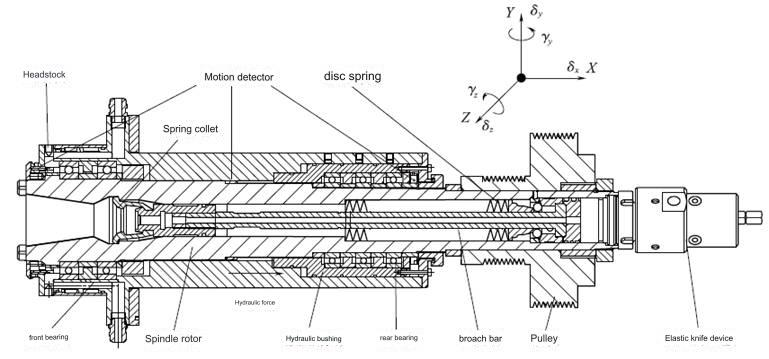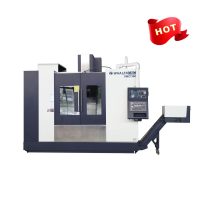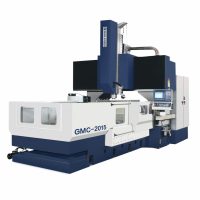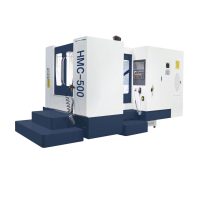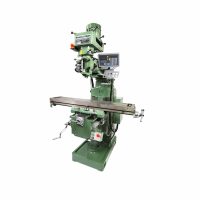E-Mail:sales@whalescnc.com
E-Mail:sales@whalescnc.com
The 3 most common types of machining center spindles
Machining centers, the backbone of modern manufacturing industries, owe much of their precision and efficiency to a singular component: the machine tool spindle. Often overlooked in favor of more visible components, the spindle is, in many ways, the heart of the machining process.
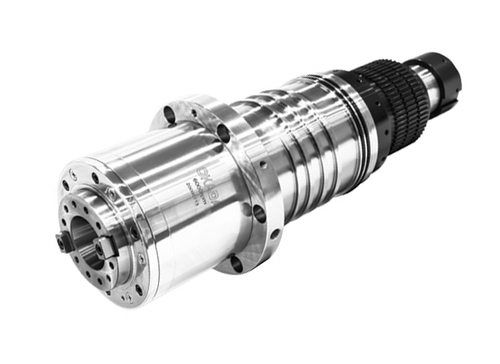
Importance of the Machine Tool Spindle
The machine tool spindle is not just another component; it’s the primary rotating axis of the machine tool, responsible for driving the cutting tools. Its performance directly influences the quality, accuracy, and finish of the parts produced. A well-maintained spindle ensures consistent results, reduced wear on tools, and longer machine life. Conversely, a malfunctioning spindle can lead to costly downtimes, reduced throughput, and compromised product quality.
Moreover, the spindle’s design and capabilities determine the range of materials a machine can handle, the types of cuts it can make, and the overall efficiency of the machining process. From high-speed operations in aerospace industries to precision cuts in medical device manufacturing, the spindle’s importance cannot be overstated.
Role of the Spindle in CNC Machining
In Computer Numerical Control (CNC) machining, the spindle’s role becomes even more pronounced. CNC machines rely on precise, automated movements to produce parts. The spindle, driven by commands from the CNC controller, determines the cutting speed and force, directly affecting the machining’s accuracy and finish.
Furthermore, in advanced CNC operations, the spindle works in tandem with features like the CNC Tool Magazine and the Auto Tool Changer, ensuring seamless tool changes and continuous machining processes. This synergy allows for complex operations, multi-tool setups, and extended production runs without manual intervention.
In essence, while CNC machines bring automation and precision to the table, it’s the spindle that translates these advantages into tangible, high-quality results. Whether in a Vertical Machining Center or specialized 3 Axis CNC Milling Machine, the spindle remains the linchpin of the operation, underscoring its pivotal role in modern manufacturing.
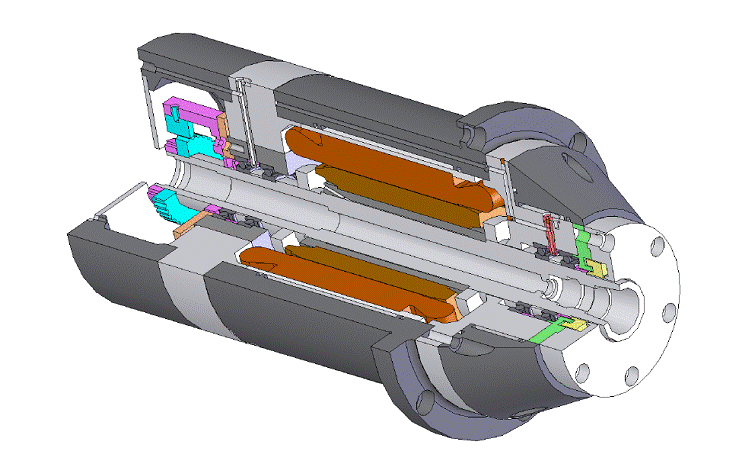
Basic Definition of the Spindle
In the realm of machining, the term “spindle” often evokes images of a rotating shaft or axis. However, its definition and role extend far beyond this simple visualization. At its core, the spindle is the primary mechanism responsible for holding and driving the cutting tools in a machining center.
Components of the Spindle
The spindle is a complex assembly, comprising several integral components, each playing a crucial role in its functionality:
- Spindle Shaft: The central rotating component, typically made of hardened steel, that transfers the rotational force from the drive system to the cutting tool.
- Bearings: These are precision components that support the spindle shaft, allowing it to rotate smoothly and with minimal friction. Depending on the spindle’s design and application, it may use angular contact ball bearings for high-speed operations or roller bearings for greater stiffness.
- Spindle Motor: The power source of the spindle, it can be belt-driven, gear-driven, or have an integral design. The motor determines the spindle’s speed, power, and torque capabilities.
- Spindle Housing: A protective casing that supports the bearing arrangement, reduces vibrations, and often incorporates channels for lubrication and cooling.
- Tool Holder Interface: The section of the spindle that interfaces with the cutting tool, often designed with specific tapers (e.g., BT30, BT40) to ensure secure and precise tool holding.
- Seals: These prevent external contaminants, such as dust and coolant, from entering the spindle assembly, ensuring longevity and consistent performance.
- Drawbar: A mechanism, often operated by pneumatics or hydraulics, responsible for clamping and releasing the cutting tool.
Working Principle of the Spindle
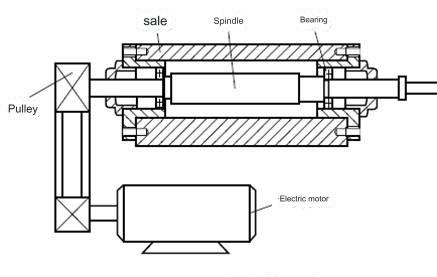
The spindle’s operation begins with the spindle motor, which generates rotational force. This force is transferred to the spindle shaft, which, supported by the bearings, rotates smoothly within the housing. As the shaft rotates, it drives the attached cutting tool, enabling it to engage with the workpiece.
The precision of the spindle’s rotation is paramount. Any inconsistencies can lead to inaccuracies in the final product. This precision is maintained through a combination of the spindle’s design, the quality of its bearings, and the efficiency of its cooling and lubrication systems.
In CNC machining, the spindle’s rotation speed and direction are controlled by the CNC controller, based on the machining program’s requirements. This allows for a wide range of operations, from high-speed milling in Machining Centers to intricate engraving tasks, all achieved with unparalleled accuracy.
Types of Spindles
The world of machining is vast, and so is the variety of spindles tailored to meet the diverse needs of different applications. From the taper design that ensures a secure fit of tools to the drive mechanisms that determine the spindle’s speed and torque, the choices are numerous. Let’s delve into the various types of spindles available in the market.
Classification Based on Taper
The taper of a spindle refers to the specific shape of the tool holder interface, ensuring a snug and precise fit between the spindle and the cutting tool. Here are some of the common taper classifications:
- BT30:
- A spindle with a smaller diameter, it’s designed for higher speeds.
- Commonly found in drilling and tapping centers or smaller Machining Centers.
- Ideal for tasks like mold-making, drilling, and tapping due to its agility.
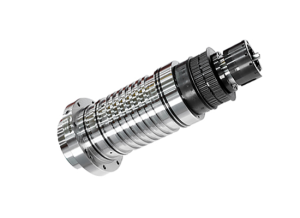
BT30
- BT40:
- A medium-diameter spindle, it strikes a balance between speed and torque.
- Widely used in machining centers suitable for both finishing and rough machining.
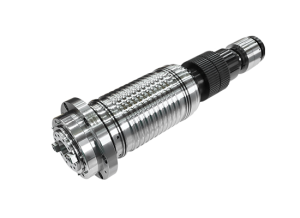
BT40
- BT50 & BT60:
- These are larger diameter spindles primarily designed for rough machining.
- They typically have a maximum speed of 8000 RPM.
- Less common in CNC machining centers but favored for heavy-duty operations.
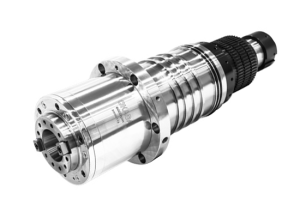
BT50
Types of High-Speed Spindles
High-speed machining is crucial for industries that require precision and efficiency. Here are the main types of high-speed spindles:
- Integral Motor Spindle:
- Can achieve speeds of up to 60,000 RPM.
- Offers high precision but may have a limited lifespan due to the intense speeds.
- Belt-Driven Spindle:
- Has a maximum speed of around 15,000 RPM.
- Provides more power and torque at a relatively lower cost, making it a popular choice for many applications.
Classification Based on Drive Mechanism
The drive mechanism of a spindle determines how it receives power and, consequently, its speed and torque capabilities:
- Belt-Driven:
- Uses a belt to transfer power from the motor to the spindle.
- Offers flexibility in speed ranges and is relatively easy to maintain.
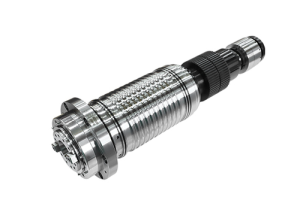
- Direct-Driven:
- The spindle is directly attached to the motor, ensuring a direct transfer of power.
- Offers higher precision and is suitable for high-speed operations.
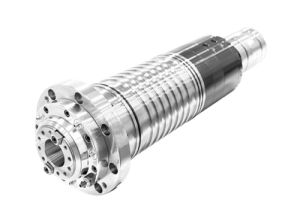
- Air Turbine:
- Uses compressed air to drive the spindle.
- Ideal for very high-speed operations but might lack in torque.
- Hybrid:
- Combines features of different drive mechanisms to optimize performance.
- Can offer the best of both worlds, like the speed of air turbines and the torque of direct-driven spindles.
- Gear-Driven:
- Uses gears to transfer power from the motor to the spindle.
- Suitable for operations that require high torque, especially at lower speeds.
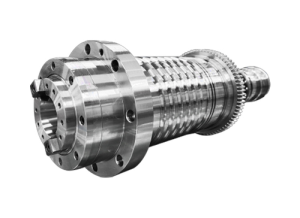
Key Features of CNC Spindles
In the intricate world of CNC machining, the spindle stands out as a pivotal component, driving the precision and efficiency of the entire operation. Its features, from power ratings to automation capabilities, play a significant role in determining the performance of a CNC machine. Let’s explore these features in detail.
Power Rating, Speed Range, and Cooling System
- Power Rating:
- Measured in horsepower (HP) or kilowatts (kW), the power rating of a spindle determines its capability to handle various cutting operations and materials.
- A higher power rating allows the spindle to handle tougher materials and achieve deeper cuts, while a lower rating might be suitable for finer, more delicate operations.
- Speed Range:
- The spindle’s speed, measured in revolutions per minute (RPM), dictates the cutting speed and, consequently, the finish and accuracy of the machined part.
- Some spindles are designed for very high speeds, suitable for operations like engraving or fine milling, while others prioritize torque for heavy-duty cutting.
- Cooling System:
- Prolonged machining operations generate heat, which can affect the spindle’s performance and lifespan.
- Spindles often incorporate cooling systems to manage this heat. These can be:
- Air-Cooled: Uses fans or compressed air to dissipate heat.
- Liquid-Cooled: Uses coolants or other liquids to absorb and transfer heat away from the spindle.
Tool Changing Capabilities and Automation
- Tool Changing Mechanism:
- Modern CNC machines often feature automatic tool changers, allowing for swift tool replacements without manual intervention.
- This mechanism, combined with the spindle’s design, ensures secure tool holding and precise alignment during tool changes.
- Automation Features:
- The spindle’s integration with the CNC controller allows for automated operations, from adjusting speeds to synchronizing with features like the Auto Tool Changer and the CNC Tool Magazine.
- Advanced spindles can also communicate with the machine’s software, providing feedback on performance, wear, and potential issues, enabling predictive maintenance and reducing downtimes.
Choosing the Right Spindle for Manufacturing
The spindle, often termed the heart of a CNC machine, plays a pivotal role in determining the quality and efficiency of the machining process. As such, selecting the right spindle for a specific manufacturing application is of paramount importance. Here’s a deeper dive into the factors that should be considered when making this crucial choice.
Factors to Consider
- Power:
- The power rating of a spindle, typically measured in horsepower (HP) or kilowatts (kW), dictates its ability to handle various materials and cutting operations.
- Harder materials, such as stainless steel or titanium, require spindles with higher power ratings to ensure efficient and smooth machining.
- Speed:
- The spindle’s speed, measured in revolutions per minute (RPM), determines the cutting speed and the finish of the machined part.
- High-speed spindles are essential for operations like engraving or fine milling, while heavy-duty cutting might necessitate a spindle with a broader speed range.
- Cooling Method:
- Prolonged machining operations can generate significant heat, which, if not managed, can affect the spindle’s performance and lifespan.
- Depending on the application, one might opt for:
- Air-Cooled Spindles: Suitable for operations with shorter durations or lesser heat generation.
- Liquid-Cooled Spindles: Ideal for prolonged operations or those that generate significant heat, as they offer superior heat dissipation.
- Compatibility:
- The spindle should seamlessly integrate with the CNC machine and other systems, such as the Auto Tool Changer or the CNC Tool Magazine.
- It’s also essential to ensure that the spindle’s taper is compatible with the tool holders and cutting tools intended for use.
- Size:
- The physical dimensions of the spindle, including its length and diameter, should be compatible with the CNC machine’s design and the workspace.
- Additionally, the size often correlates with the spindle’s power and torque capabilities, so it’s crucial to strike a balance between physical dimensions and performance requirements.
Conclusion
In the intricate tapestry of CNC machining, where precision, speed, and efficiency are paramount, the spindle emerges as a central figure, orchestrating the symphony of operations. Its role, while often understated, is undeniably pivotal, influencing every facet of the machining process.
The spindle’s significance lies not just in its ability to hold and rotate cutting tools but in its profound impact on the quality of the final product. From ensuring precise cuts and fine finishes to enabling high-speed operations and seamless tool changes, the spindle is the linchpin that holds the entire machining process together.
Furthermore, with advancements in technology and the increasing demands of modern manufacturing, the spindle’s role has evolved. Today, it’s not just about rotation; it’s about integration with systems like Auto Tool Changers, compatibility with advanced CNC Tool Magazines, and adaptability to various materials and operations.
In essence, the spindle is the heart of CNC machining. Its significance transcends its physical presence, resonating in the accuracy, efficiency, and excellence of the products it helps create. As industries continue to push the boundaries of manufacturing, the spindle’s role in ensuring optimal CNC machining results will remain as crucial as ever.
Need to buy a machine tool?
You can upload drawings of machined parts. Our experts will help you determine the best machine for your needs.

